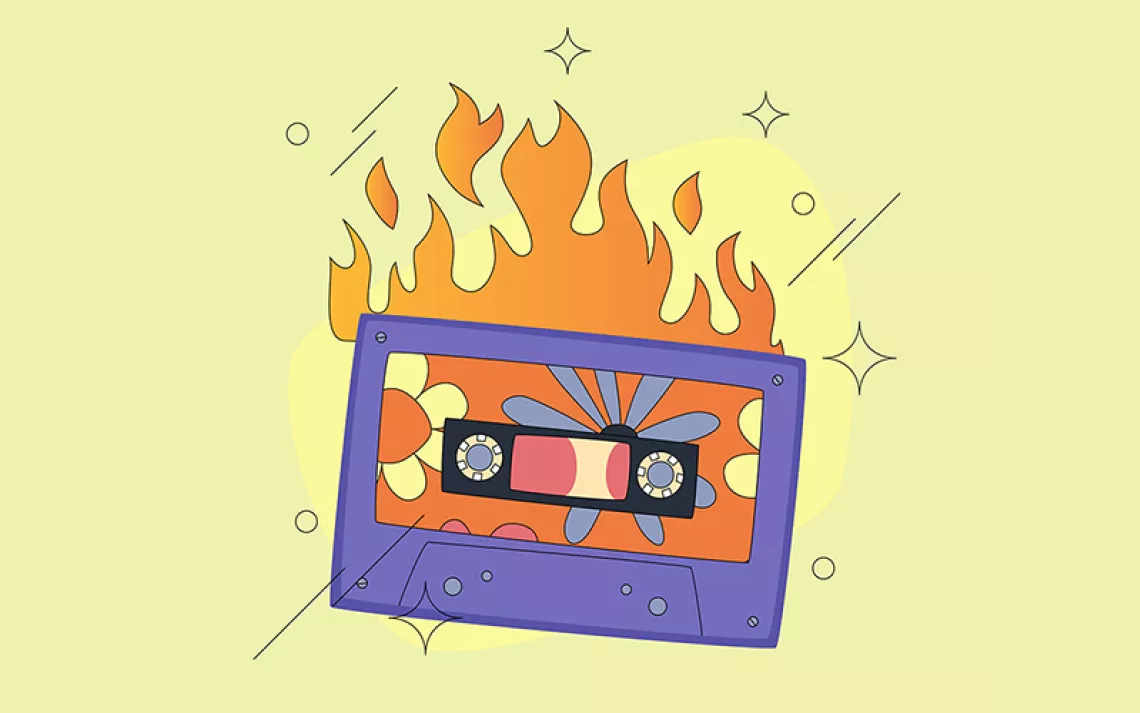Mythbusting Movie Eco-Apocalypses

Everyone likes a good escapist movie, but what about the ones that try to combine environmental disaster with blockbuster entertainment? Here’s a close look at some of the most famous eco-apocalypse films, starting with the far out and moving closer to home.
The Happening: In this 2008 flop, the plants of the world develop a neurotoxin to kill the humans who have been destroying the planet. This premise ignores evolutionary logic—the world’s vegetation would have to develop sentience and communication in order to launch an organized biological defense like the one depicted in the movie, which in itself would take thousands of years. Even if plants did evolve to produce a neurotoxin, it would also probably affect everything else on earth with a brain, so targeting only humans is out of the question. This one won’t be happening any time soon. Or ever.
The Day After Tomorrow: This film’s plot revolves around most of the US being plunged into an epic snowstorm, with New York reaching temperatures as low as −98 °F. While climate change does pose a real threat to society—intense storm events have been linked to changing climate—the speed of the phenomenon that takes center stage in The Day After Tomorrow is implausible. A weather event like this one might be severe, but nothing as planet-changing as the storm in this flick (we would need a much more disturbed climate for this to occur). Thrilling, but horribly inaccurate in terms of plausible eco-catastrophe.
Waterworld: A classic cringer, Waterworld depicts an earth in which all the polar ice caps have melted, leaving the world submerged in water (and the people clad in lamentably unattractive swimwear). Research has shown that the polar ice caps are shrinking, and predictions show that if not mitigated, climate change could continue to wreak havoc on the Earth's ice. However, the timescale of this movie is again much too fast—scientists say they don’t know how long it would take to melt the ice caps completely, although some estimate about 5,000 years. In Waterworld? It happened in a matter of decades. Check out this National Geographic interactive map that shows what the world would look like if all the ice melted (hint: sea level would rise about 216 feet and most major cities would be underwater, but we wouldn’t be anywhere near Waterworld levels of nonsense).
Soylent Green: This film was iconic for the green movement of the 70’s, centered on some of the era's most urgent problems: overpopulation, lack of fresh food, and pollution. The overpopulation is definitely realistic, though not the exact numbers—the film depicts New York City in the year 2022 with a population of 40 million, while the actual projected numbers for that year are just about half of that. The food issue, however, may become a reality sooner than we’d like--with biodoversity on the decline and the future of bees threatened, our fresh produce selection could soon be a thing of the past. Take a look at this BBC video that details what the world would look like without bees--which is a distinct possibility if we don't get our addiction to monocultures under control (hint: we also need to plant more bee-friendly flowers).
WALL-E: In WALL-E’s world, the planet is uninhabitable in 2105 as a result of the the accumulation of waste across the surface of the globe. Allen Hershkowitz, senior scientist with the Natural Resource Defense Council (NDRC), weighed in on the possibility of this actually occurring on our earth as we know it: “A complete saturation of every corner of the globe with waste is implausible. That being said, we do have an ecological disaster when it comes to waste. It’s much more likely that plastics pollution will cover every square meter of the ocean—that’s a frightening possibility”. In response to WALL-E’s idea that waste is making the world uninhabitable, he said, “Certainly our production of waste is a major source of pollution which produce large quatities of methane gas, toxic chemicals, and carcinogenic leachate.” To avoid the world of WALL-E, Hershkowitz advises that we work towards zero waste: "We need design products with recycling in mind and build up recycling manufacturing infrastructure. The wastes that saturate the world of WALL-E need to be mined as urban resources so we stop filling our world with trash”.
You heard the man. Bring on the friendly robots, but let’s hold it on the excessive trash build-up.
 The Magazine of The Sierra Club
The Magazine of The Sierra Club



